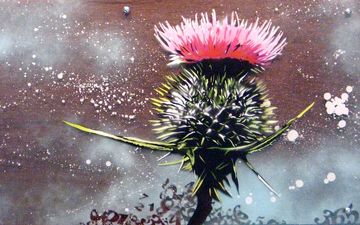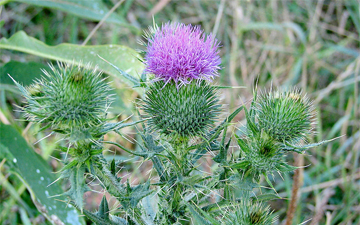Cirsium vulgare (Spear thistle, Bull thistle, Plumed thistle, Roadside thistle; syn. C. lanceolatum) is a species of the genus Cirsium, native throughout Europe, Asia and northern Africa, but also present in North America as an invasive weed. It is designated an “injurious weed” under the UK Weeds Act 1959[1] and a noxious weed in nine US states.[2]
It is a tall biennial thistle, forming a rosette of leaves in the first year, and a flowering stem 1–2.5 m tall in the second year. The leaves are very spiny, deeply lobed, up to 15–25 cm long (smaller on the upper part of the flower stem). The inflorescence is 2.5–5 cm diameter, pink-purple, with all the florets of similar form (no division into disc and ray florets). The seeds are 5 mm long, with a downy pappus, which assists in wind dispersal.
(From Wikipedia, May 12th, 2010)
– – –
The spear thistle is a perennial species. Seedlings appear from autumn to April and they do not begin to flower until their second year of growth (4). Flowers are produced from July to September (6), and are pollinated by long-tongued bees, hover-flies and butterflies (2). After the seeds have been produced, the flowering stems die back (4).
(From EOL via ARKive)
– – –





